Ethereum vs. Cosmos
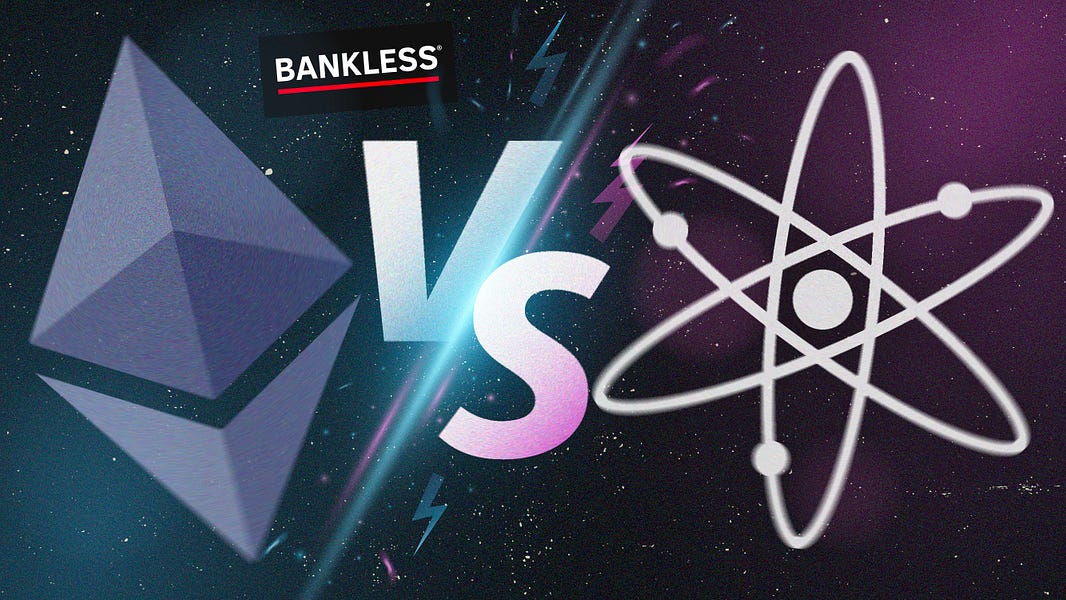
.png-a616dc52961c1edd72b0c1fdf5f47e7a.png-d44bdfd9b52d9f76131f38376a1fe385.png) Kraken - See What Crypto Can Be with Kraken
Kraken - See What Crypto Can Be with Kraken
Dear Bankless Nation,
Monolithic blockchains were nice while they lasted.
But because they try to do everything (consensus, data availability, settlement, and execution) in each node, they eventually run into the problems of the good ol’ blockchain trilemma.
Want to have decentralized security? Settle for a slow chain. Want to create a fast TPS chain with high security? Decentralization goes out the window.
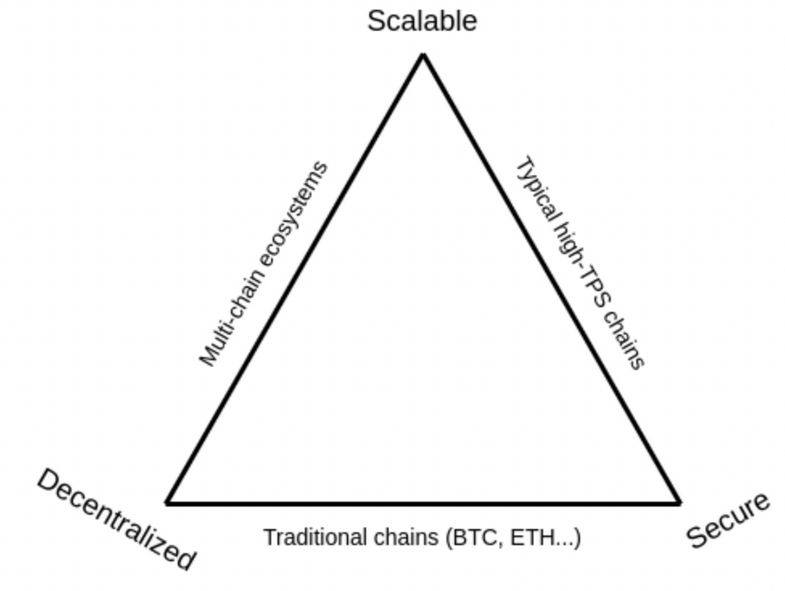
Modular chains bypass this problem by segmenting the many roles of a blockchain into different layers.
This then allows chains to scale in a way that minimizes tradeoffs.
Leading the charge in this modular race is Ethereum and Cosmos.
Ben breaks down today the critical differences between both of them.
— Bankless Team
The future of blockchains is modular.
As users and newcomers learned during the 2021 bull market, whether it be due to sky-high gas fees, congestion, or stability issues, monolithic blockchains are not suitable to meet the scaling needs of a handful of degens, let alone those of the billions of people across the world.
Thankfully, many forward-looking developers have long anticipated these challenges, working toward executing on roadmaps that enable the creation of a network of modular blockchains, with the two most prominent of these being Ethereum and Cosmos.

Ethereum and Cosmos have been around for a while, and are relatively grassroots and decentralized, with VCs and investors having a far less outsized influence than other ecosystems. Both are building towards similar, yet different visions of this modular future.
Ethereum has a rollup-centric roadmap, aiming to scale a single, highly-decentralized settlement layer via a cohort of Layer 2’s (L2).
On the other hand, Cosmos is attempting to create an “internet of blockchains,” or an interoperable network of sovereign, application-specific blockchains.
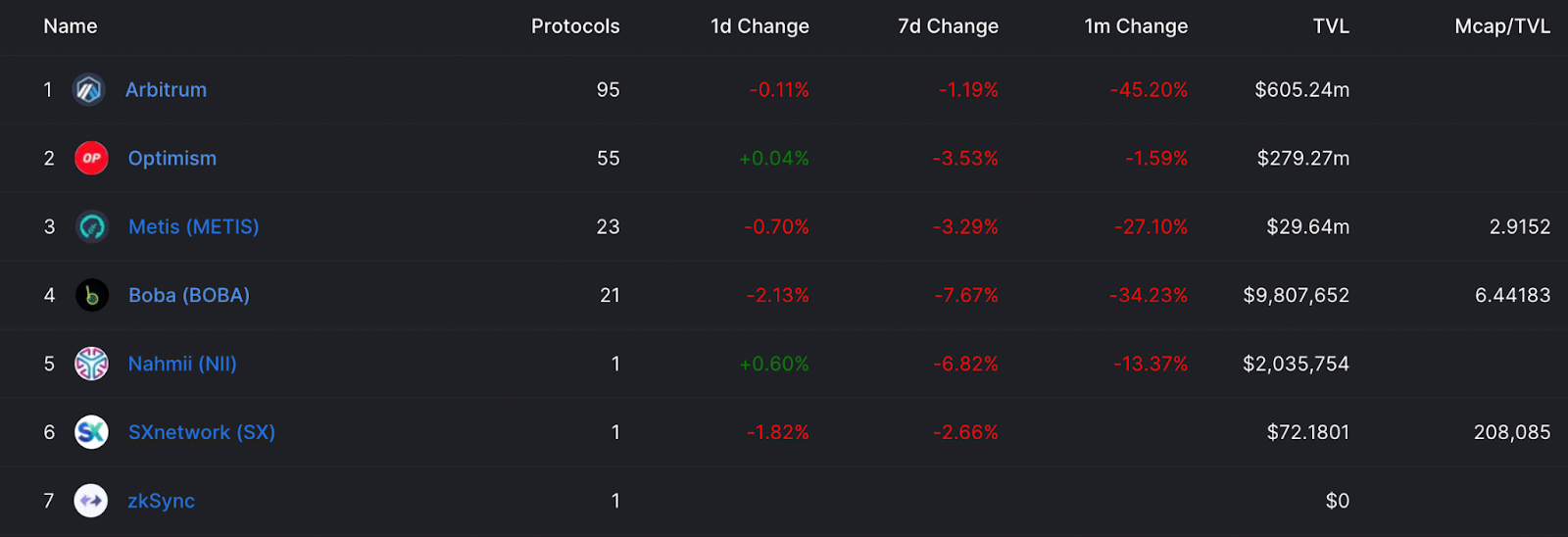
Both ecosystems are in their early days. Ethereum L2s account for 1.58% of the total DeFi TVL, while Cosmos chains have a 0.82% share.
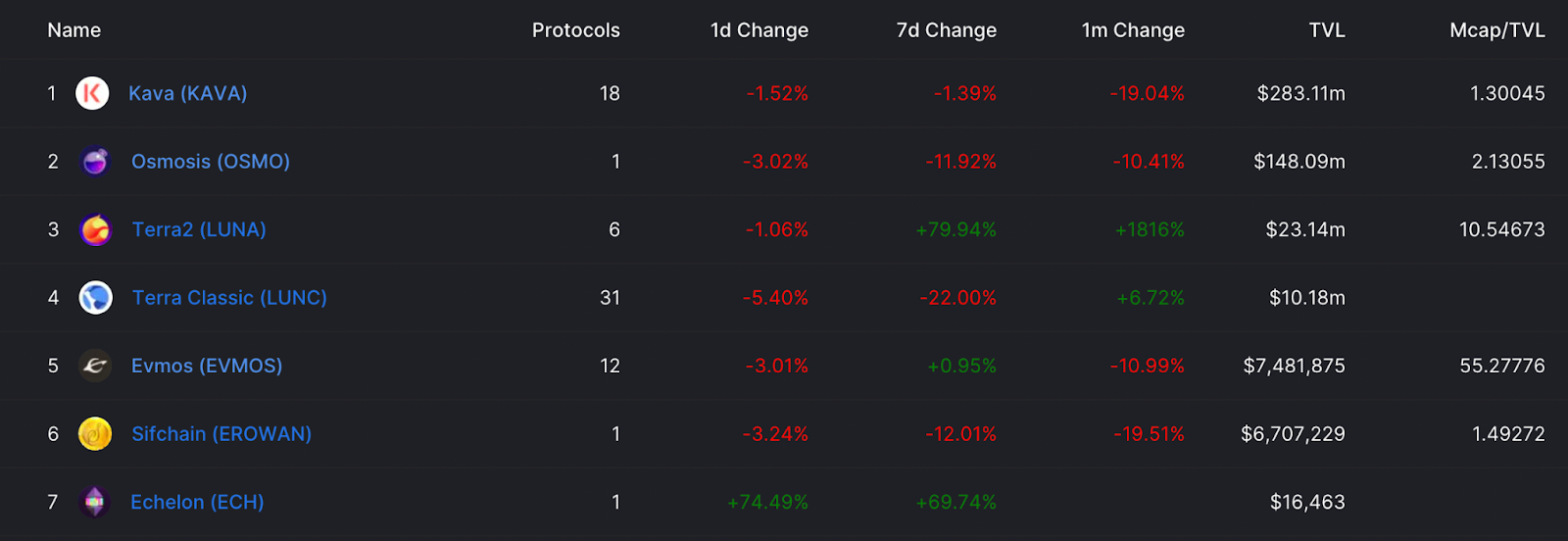
However, competition is heating up. Ethereum L2s recently lost their biggest application to Cosmos, when market-leading decentralized perpetuals exchange dYdX announced their decision to build their V4 as a sovereign Cosmos chain.
This poses the question… are these ecosystems complimentary or competitors?
And what does each offer that the other doesn’t?
Let’s see if we can answer these questions by comparing each ecosystem through looking at their technical capabilities, as well as their ability to serve as a credibly neutral settlement layer.
Technical Capabilities
Let’s begin by exploring some of the design traits of both Ethereum L2s and Cosmos to get a better understanding of the benefits and tradeoffs of each.
Capabilities of Ethereum L2s
L2s utilize Ethereum for consensus and data availability, while moving execution off-chain to transaction environments known as rollups. These rollups batch, compress, and submit a proof of transactions back to L1, in doing so reducing the high Ethereum gas costs for individual users by amortizing them across all transactors on L2.
This allows Ethereum to scale by fitting a greater number of transactions into the same amount of block-space, enabling the network to scale while remaining economically sustainable and maximally decentralized, as users can still easily run a node to verify the state of the chain.
There are two flavors of L2s, Optimistic Rollups (ORUs), which use fault-proofs, and zkRollups (ZKRs) which use validity proofs. Although ZKRs have greater transaction capacity than ORUs, the challenges of implementing them in production, as well as the current lack of EVM compatibility, means that the latter is far more likely to serve as Ethereum’s predominant scaling solution for the foreseeable future.
Despite this, there are numerous scaling solutions at both the L1 and L2 levels, such as call-data compression, proto-danksharding, and EIP-4488. Furthermore, fractal scaling through L3’s, which are rollups that settle to an L2 rather than directly to the L1, will further increase scalability and can open up a new design space for application-specific rollups.
L2s also offer a considerable degree of composability, as general purpose rollups such as Optimism and Arbiturm each host a large and fast growing ecosystem of protocols and applications. This composability is poised to be enhanced in the future through the adoption of generalized messaging protocols such as Layer 0 and Nomad, which increase interoperability between rollups, albeit with the introduction of new risks and trust assumptions.
Capabilities of Cosmos Chains
Cosmos is highly suited to building application-specific blockchains, or app-chains. These are chains which are optimized for running a single application, such as an exchange like Osmosis, the largest Cosmos chain by TVL, and the aforementioned dYdX Chain.
This is made possible via the Cosmos SDK, a blockchain development framework that allows developers to have near total control over its design. Because of this, Cosmos chains are considered to be sovereign.
For instance, builders can choose whether their chain will use an account or UTXO model, what language the state machine will be built in, as well as a variety of other parameters. This is far more flexible when compared to networks such as Ethereum, where these parameters are already set and must be conformed to by all developers.
The increased customizability of Cosmos also extends to a governance and security, as each chain can either bootstrap their own individual validator set or beginning in Q3 2022, utilize a feature called interchain security, which, like Ethereum and L2s, will enables chains to outsource their validator set to other networks, such as the Cosmos Hub. Interchain security may prove to be a critical feature for Cosmos chains, as bootstrapping a validator set is difficult and likely to lead to reduced security and increased vulnerability to attacks.
Cosmos chains also benefit from native interoperability through inter-blockchain communication (IBC). IBC utilizes light clients to enable trust-minimized bridging and message passing between the chains in which it is currently enabled.
Another recently deployed upgrade, interchain accounts, allows for transactions between IBC-compatible chains, enabling the creation of cross-chain applications that utilize this interoperability standard and help improve the fragmented composability that comes with app-chains.
Takeaway
Both Ethereum L2s and Cosmos bring significant value to the table. Ethereum L2s enable low-cost applications with the highest level of security, while Cosmos currently provides a greater degree of customizability, interoperability, and sovereignty for individual applications.
Ethereum vs the Cosmos Hub As Settlement Layers
As we can see, both Ethereum and Cosmos plan to utilize some form of shared security. Ethereum L1 will serve as a settlement layer for rollups, while the Cosmos Hub can play a similar role for chains wishing to utilize interchain security.
Let's see how each stacks up on this front.
Ethereum L1
There is currently more than 13.01M ETH (~$13.67B at current prices) staked on the Beacon Chain, which will be the canonical chain after Ethereum’s merge from PoW to PoS. This puts the cost to censor transactions and reorg the chain, attacks which require ⅓ and ⅔ of the total amount staked, at ~4.51B and ~$9.15B respectively.
The Beacon Chain currently has 404,125 validators, which measures the individual number of 32 ETH (~$33,632) deposits, the threshold required to participate in consensus and to earn staking rewards and transaction fees. Although there is no specific figure given, per Ethereum Foundation researchers the theoretical maximum number of validators is around ~4M.

Rather than have native stake-delegation as a means of working around the high costs that come with running a validator, Ethereum instead democratizes access to staking rewards through the open market. This can be through custodial intermediaries such as exchanges like Kraken, or non-custodial services like Lido issuing liquid staking derivatives.
However, the strong network effects of liquid staking derivatives, has led to a significant accumulation of stake among entities like Lido, which holds 31.7% of beacon chain deposits. It remains to be seen if stake becomes more widely distributed post-merge.
Despite this, the direct influence of entities such as Lido, and LDO holders who govern the protocol, is limited due to Ethereum’s lack of on-chain governance.
Rather than have changes to the network be determined by token holder vote, Ethereum is governed off-chain by rough consensus. This means that all the network's stakeholders, such as core and application developers, users, and ETH holders, must be on-board in order for a major upgrade to go through. This disperses governance power across a wider swath of groups, increasing Ethereum’s credible neutrality by limiting the potential for a plutocracy to emerge.
Cosmos Hub
There is currently 189.99M ATOM, worth ~$1.48B, staked on the Cosmos Hub. This means that it costs ~$489.39M and ~$993.68M to reach the ⅓ and ⅔ threshold needed to halt or reorg the chain.
The Cosmos Hub has 175 active validators, the maximum cap set by governance. The network does employ delegated proof-of-stake (DPOS), where token holders can delegate their stake to one of these validators in order to earn the returns that come with securing the network.

Despite the capped validator set and use of DPOS, the stake appears to be widely distributed among a greater number of entities than on Ethereum. On the Cosmos Hub, 7 and 23 entities control ⅓ and ⅔ of the stake, while on Ethereum that number is lower at 2 and 16 respectively.
Although stake is more distributed, there is a greater risk of power being concentrated in the hands of validators on the Cosmos Hub due to the use of on-chain, token-based governance. This increases the ability of large holders to exert their will on the chain by forcing through proposals that may not have the approval of all stakeholders within the ecosystem, in turn threatening the Cosmos Hub’s credible neutrality.
Takeaway:
As we can see, Ethereum L1 is more secure than the Cosmos Hub, and has a far greater number of and more open validator set. Despite this, and though Cosmos Hub has a wider distribution of stake, the presence of on-chain governance places a far greater amount of power in the hands of tokenholders and validators relative to Ethereum.
Are They Competitors?
As we can see, Ethereum and Cosmos are both building towards similar visions. While Ethereum offers higher levels of security and a more credibly neutral settlement layer, Cosmos chains are more flexible, interoperable, and optimized for individual use cases.
Although there can only be one winner for biggest ecosystem, with billions of users and trillions in capital still to be onboarded into Web3, it seems likely that both Ethereum and Cosmos will wind up to be complimentary, serving different use cases, rather than direct competitors.
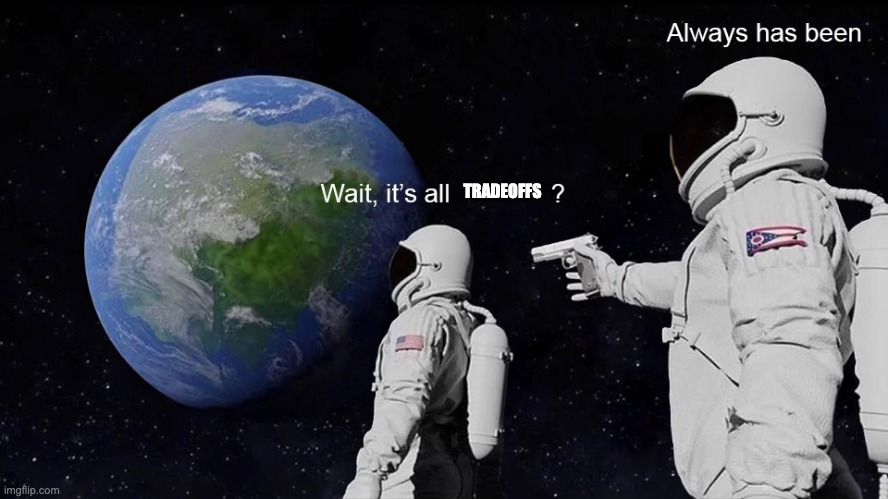
At the end of the day—as with any system—it comes down to tradeoffs.
Which will you choose?
Action steps
- 📚 Read David’s Ultra Scalable Ethereum breaking down Ethereum’s modular vision
- 📺 Watch a State of the Nation episode on Modular vs Monolithic chains
 Ben Giove
Ben Giove 
.png-a616dc52961c1edd72b0c1fdf5f47e7a.png-8359976fdb0656215e306b0de9208da8.png)